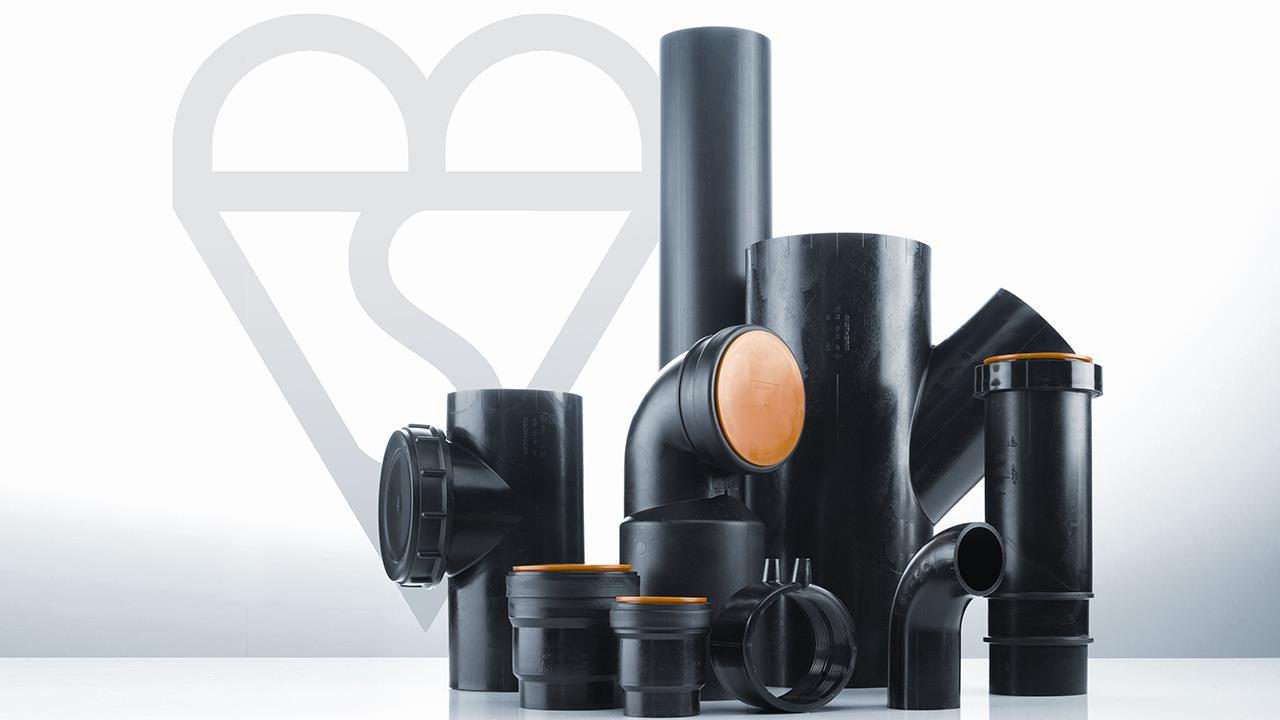

David Barker, Head of Category Management at Marley Plumbing & Drainage, explores how a building’s drainage system fits into the air quality conversation.
An ideal soil and waste drainage system is something that is kept out of sight and out of mind, performing quietly in the background. A key part of achieving this is a careful drainage system design, one that considers the importance of managing air pressure within the pipework.
Failure to do so could result in a build-up of air pressure within the system, leading to bacteria and foul odours entering the occupied space and, in turn, spoiling the carefully controlled and managed indoor air quality.
So, what is this air pressure and where does it come from?
Every flow of waste water within a drainage system, whether from a flushed toilet or kitchen tap, causes pressure, with positive pressure in front of the flow and negative pressure behind. In a typical two-storey house, while this mix of positive and negative pressure will exist within the drainage system, it is perhaps too slight to have any noticeable impact.
However, consider instead a high-rise building, such as residential apartments, a hotel or student accommodation, with a hugely complex soil and waste system and a significant number of plumbing fixtures. With the potential for a large amount of water to be flowing through the system at any one time, especially during ‘peak’ times, such as early morning and evening, this air pressure can build up at a far faster and greater rate.
The impact of this air pressure can lead to the water trap seals of plumbing fixtures, such as the kitchen sink, bath tub, or shower tray being compromised. Positive air pressure can cause foul air bubbles to pass through the water seal and enter into the occupied space, while negative air pressure can lead to ‘fall back’ of water from the trap, allowing easy passage for any bacteria or sewer gases.
As well as unpleasant odours, this increased presence of bacteria in the living space can also have a negative impact on the clean and healthy indoor environment that so many of us are endeavouring to create.
Fortunately, there are a variety of solutions available which, when incorporated into the design of a building’s soil and waste drainage, can help to control and manage the build-up of air pressure and protect the water trap seals.
Perhaps the simplest is secondary ventilation, which features the installation of a ‘dry pipe’ parallel to the main stack. Conveyed through the whole building, linking at each floor level, the ventilation pipe works to passively balance air pressure within the system by allowing positive pressure a means of escape. However, this means of air pressure management is not always suitable, especially on developments where building space is limited – as can often be the case.
For projects where space is at a premium, stack-aerators could be an ideal alternative solution. Designed to replace the standard branch fittings (therefore requiring no additional room), stack-aerators connect the horizontal pipework branches with the vertical main stack.
Thanks to its unique curved shape, these fittings can help to slow and smoothly merge the flow of water through the soil and waste system, working to better control the mix of water and air pressure. In turn, this can contribute to improved stability within the system, protecting the integrity of the individual trap water seals.
A more recent addition to the plumbing industry, however, is active drainage ventilation. As the name suggests, active drainage ventilation works to proactively control the air pressure within a drainage system, whether by removing or reducing an incoming positive or negative pressure. Used in conjunction with air admittance valves, active drainage ventilation can provide direct relief at the point of need, delivering high-levels of performance and efficiently reducing the chances of trap seal depletion occurring.
With indoor air quality coming under increased levels of attention, understanding how it can be created and maintained is key. While conversation on air quality may more commonly revolve around the role of building ventilation, it is just as important to consider the other factors that can have an impact, including the correct design, specification, and installation of a building’s soil and waste drainage system.
If you'd like to keep up-to-date with the latest developments in the heating and plumbing industry, why not subscribe to our weekly newsletters? Just click the button below and you can ensure all the latest industry news and new product information lands in your inbox every week.